Abstract
During a period of five years 1192 water samples from swimming pools were examined for staphylococci and 338 for coliform organisms only. Eighty-nine different pools were sampled.
Numbers of staphylococci, estimated by the membrane filtration technique did not bear any significant relation to either bathing load or concentration of free chlorine.
Wide variation in the staphylococcal count was observed when different parts of a pool were sampled on the same occasion.
The only practicable standard for pool samples in relation to staphylococci would appear to be that these organisms should be absent from 100 ml. water when the pool has been out of use during at least ten hours before sampling if filtration and chlorination are adequate.
Full text
PDF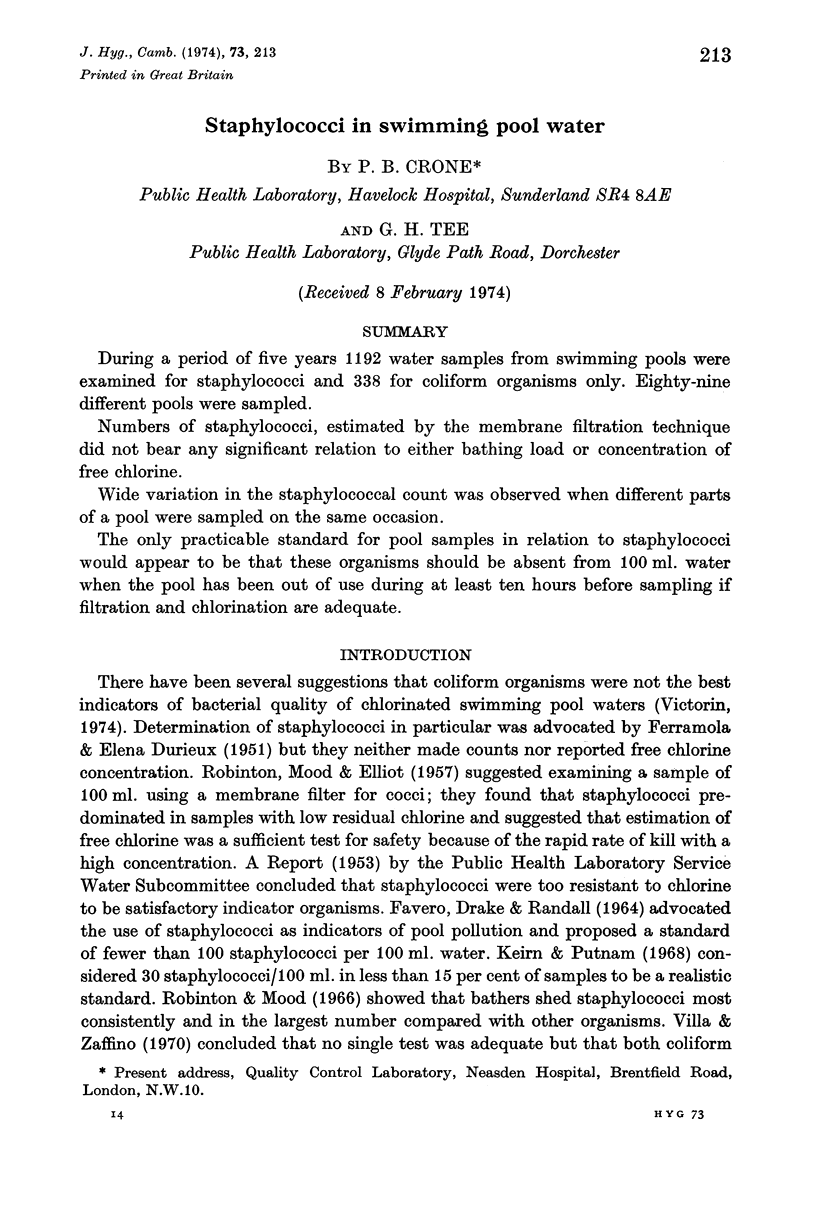
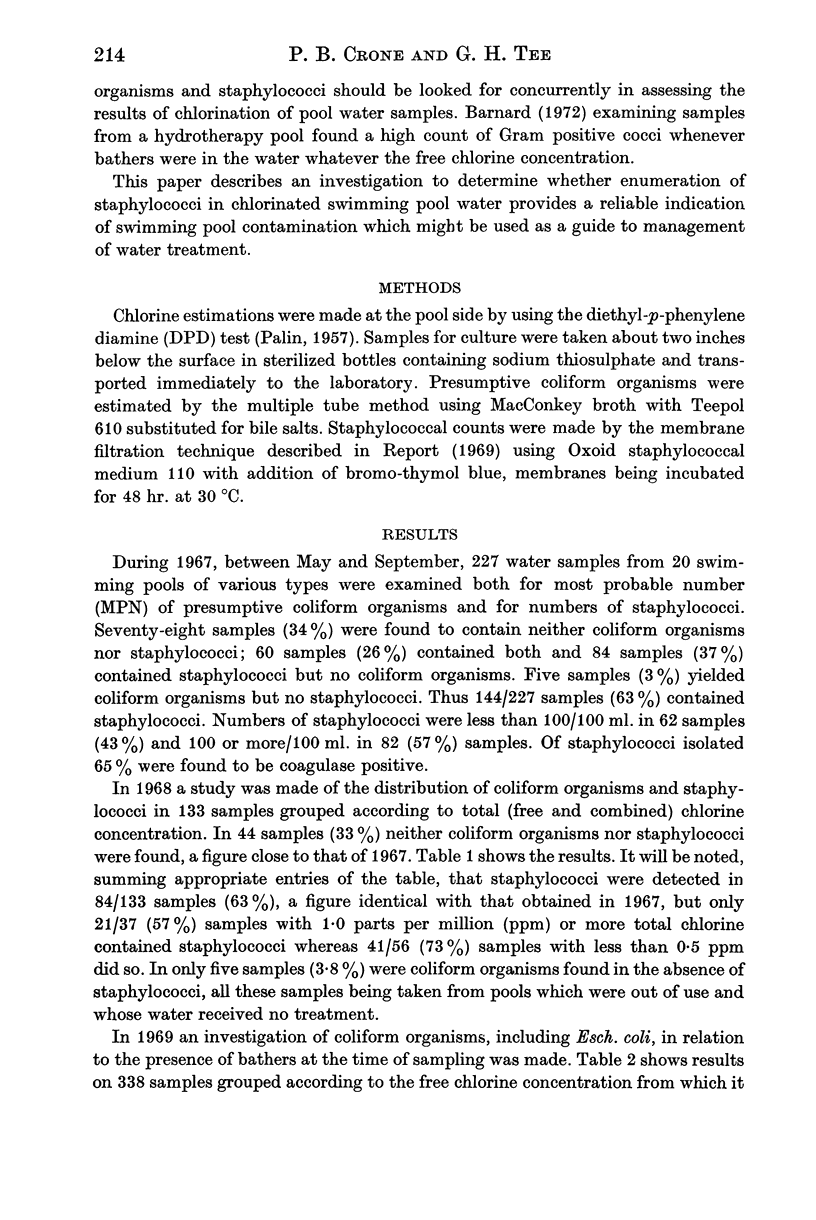
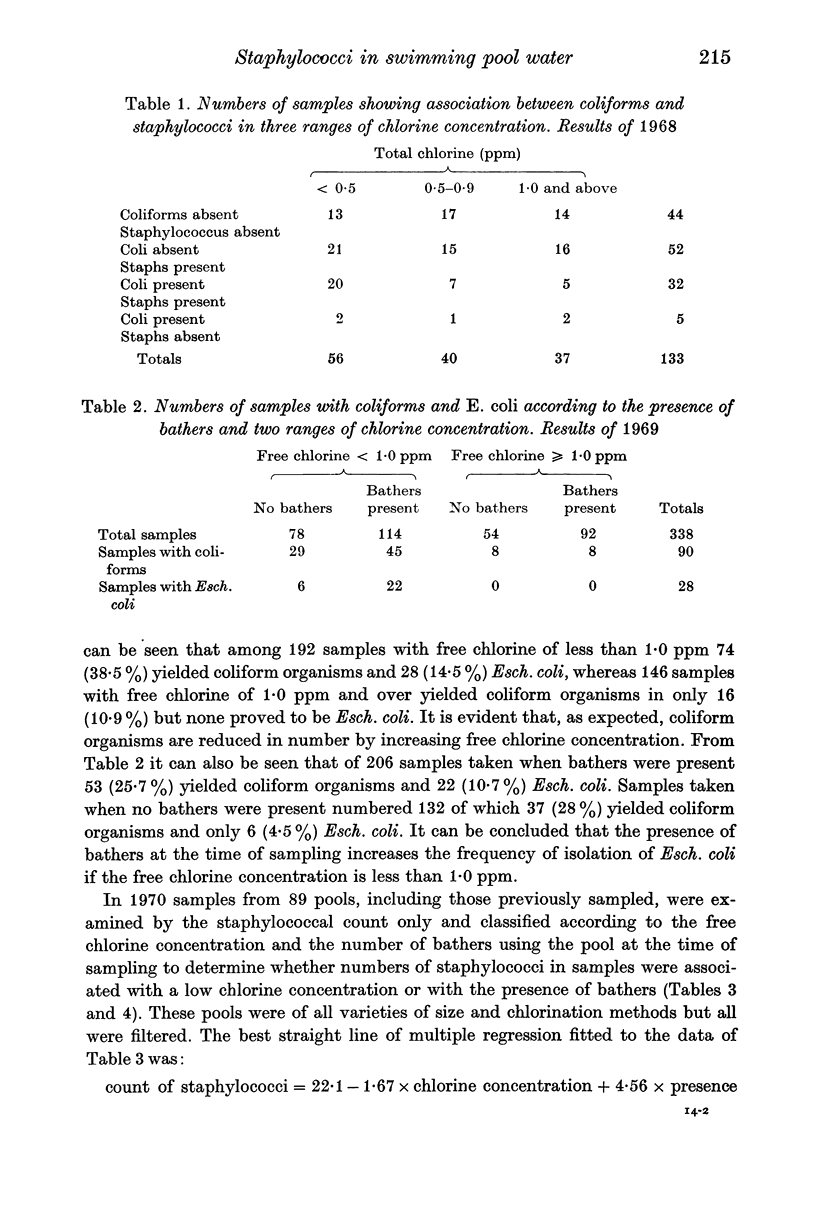
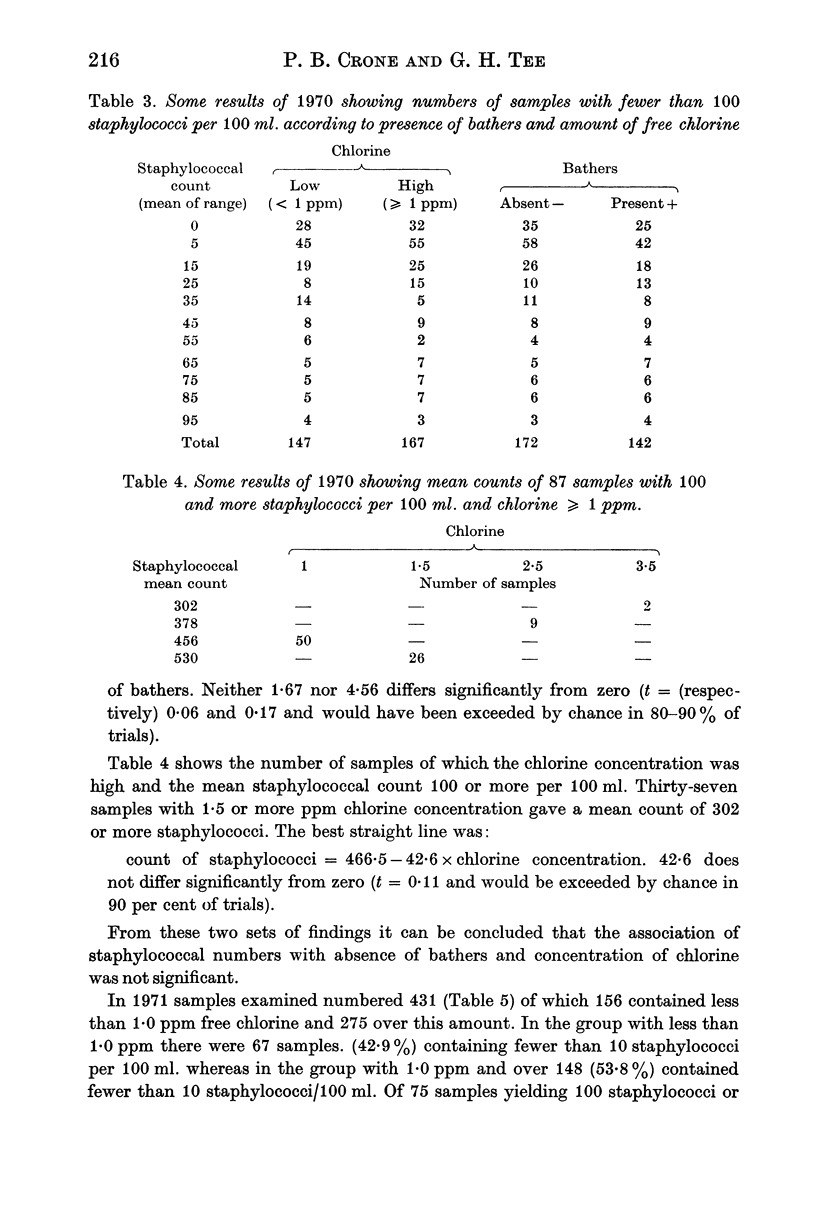
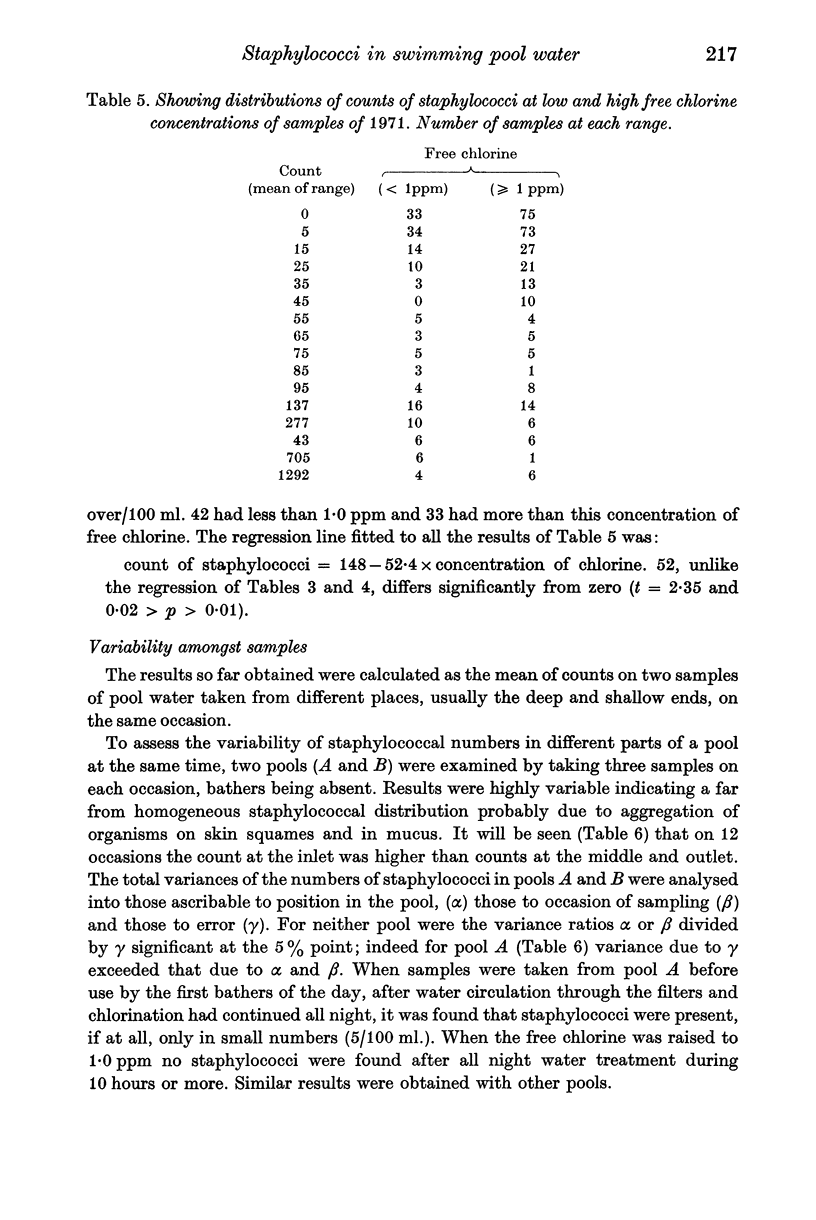
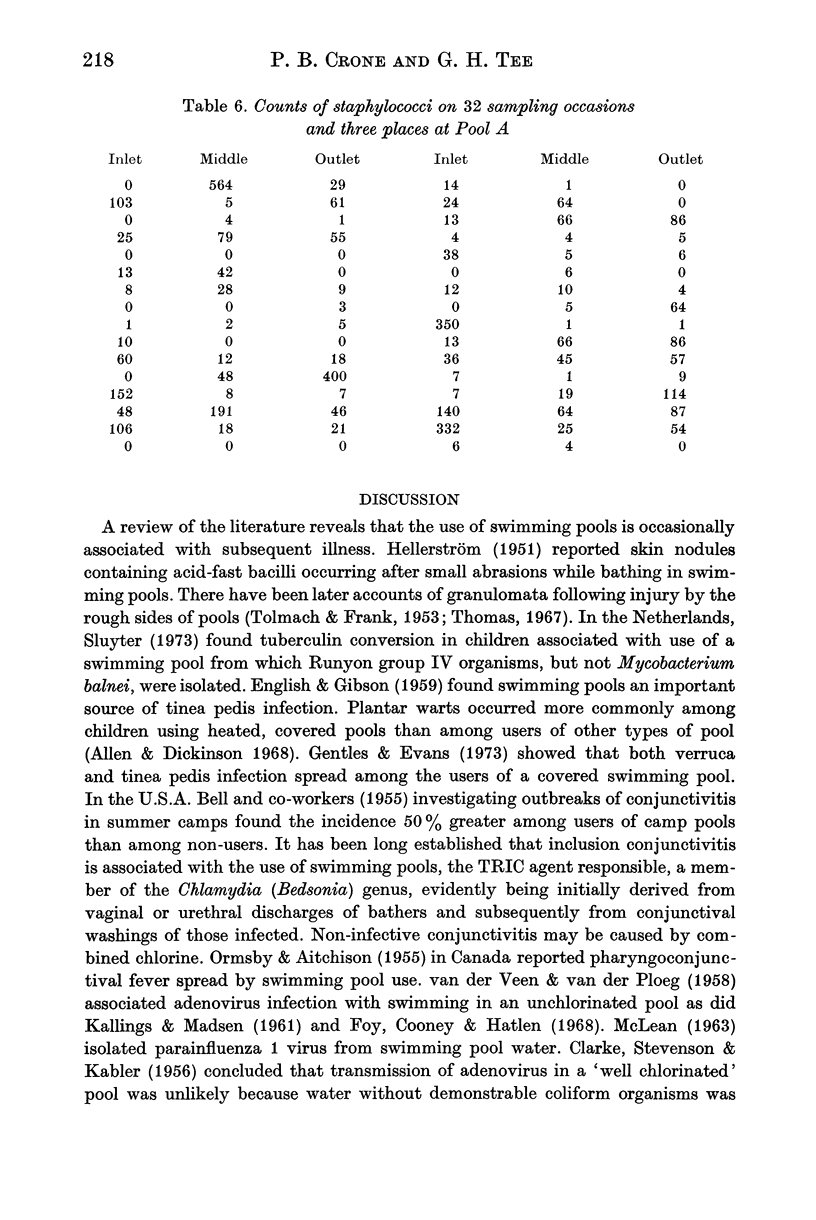
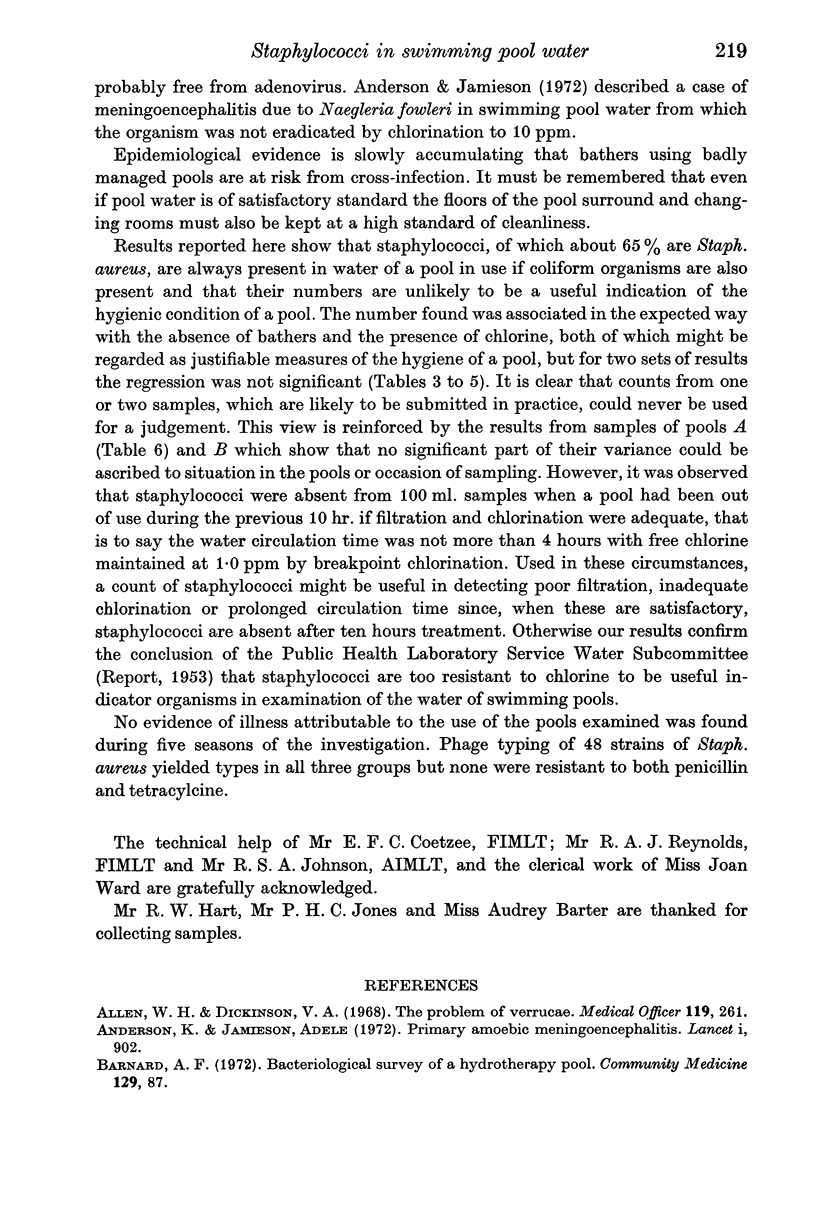
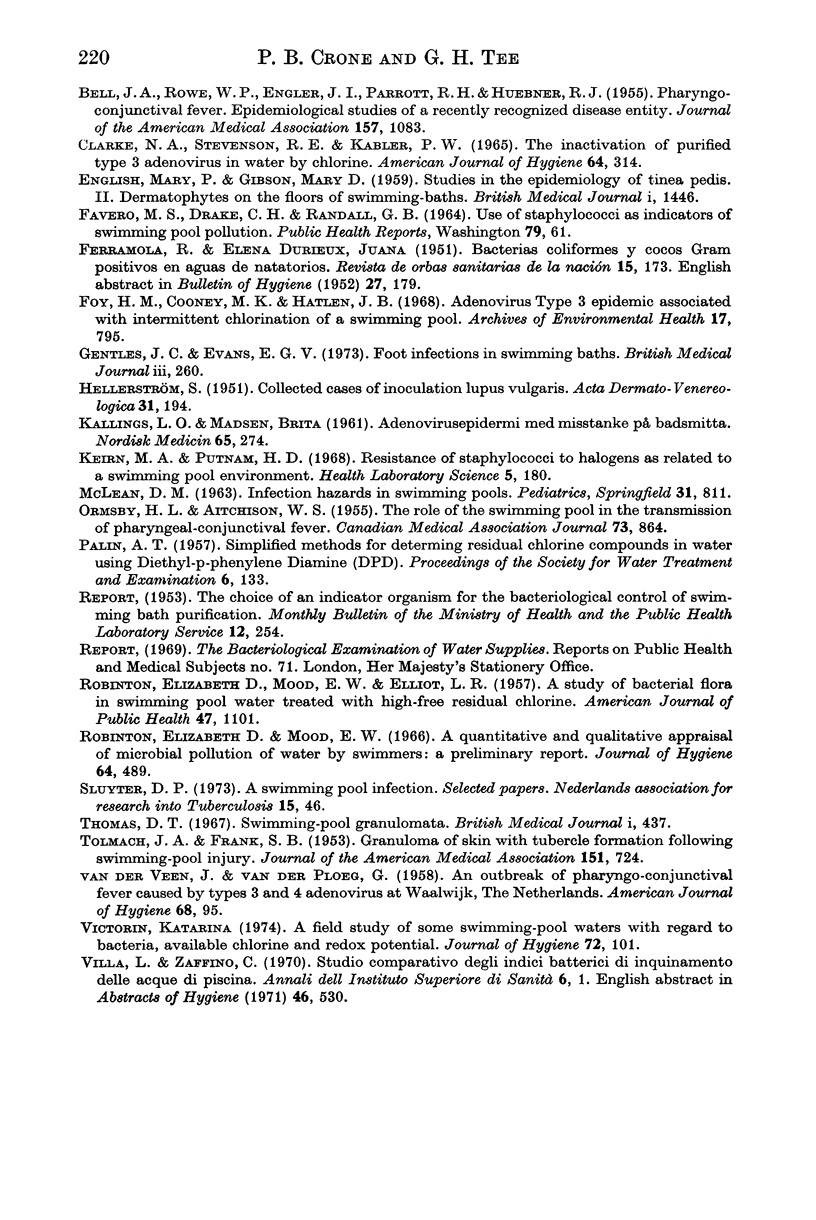
Selected References
These references are in PubMed. This may not be the complete list of references from this article.
- Anderson K., Jamieson A. Primary amoebic meningoencephalitis. Lancet. 1972 Apr 22;1(7756):902–903. doi: 10.1016/s0140-6736(72)90772-6. [DOI] [PubMed] [Google Scholar]
- BELL J. A., ROWE W. P., ENGLER J. I., PARROTT R. H., HUEBNER R. J. Pharyngoconjunctival fever; epidemiological studies of a recently recognized disease entity. J Am Med Assoc. 1955 Mar 26;157(13):1083–1092. doi: 10.1001/jama.1955.02950300011003. [DOI] [PubMed] [Google Scholar]
- CLARKE N. A., KABLER P. W., STEVENSON R. E. The inactivation of purified type 3 adenovirus in water by chlorine. Am J Hyg. 1956 Nov;64(3):314–319. doi: 10.1093/oxfordjournals.aje.a119844. [DOI] [PubMed] [Google Scholar]
- ENGLISH M. P., GIBSON M. D. Studies in the epidemiology of tinea pedis. II. Dermatophytes on the floors of swimming-baths. Br Med J. 1959 Jun 6;1(5135):1446–1448. doi: 10.1136/bmj.1.5135.1446. [DOI] [PMC free article] [PubMed] [Google Scholar]
- Foy H. M., Cooney M. K., Hatlen J. B. Adenovirus type 3 epidemic associated with intermittent chlorination of a swimming pool. Arch Environ Health. 1968 Nov;17(5):795–802. doi: 10.1080/00039896.1968.10665321. [DOI] [PubMed] [Google Scholar]
- Gentles J. C., Evans E. G. Foot infections in swimming baths. Br Med J. 1973 Aug 4;3(5874):260–262. doi: 10.1136/bmj.3.5874.260. [DOI] [PMC free article] [PubMed] [Google Scholar]
- HELLERSTROM S. Collected cases of inoculation lupus vulgaris. Acta Derm Venereol. 1951;31(2):194–211. [PubMed] [Google Scholar]
- Keirn M. A., Putnam H. D. Resistance of staphylococci to halogens as related to a swimming pool environment. Health Lab Sci. 1968 Jul;5(3):180–193. [PubMed] [Google Scholar]
- MCLEAN D. M. Infection hazards in swimming pools. Pediatrics. 1963 May;31:811–818. [PubMed] [Google Scholar]
- ORMSBY H. L., AITCHISON W. S. The role of the swimming pool in the transmission of pharyngeal-conjunctival fever. Can Med Assoc J. 1955 Dec 1;73(11):864–866. [PMC free article] [PubMed] [Google Scholar]
- ROBINTON E. D., MOOD E. W., ELLIOT L. R. A study of bacterial flora in swimming pool water treated with high-free residual chlorine. Am J Public Health Nations Health. 1957 Sep;47(9):1101–1109. doi: 10.2105/ajph.47.9.1101. [DOI] [PMC free article] [PubMed] [Google Scholar]
- Robinton E. D., Mood E. W. A quantitative and qualitative appraisal of microbial pollution of water by swimmers: a preliminary report. J Hyg (Lond) 1966 Dec;64(4):489–499. doi: 10.1017/s0022172400040808. [DOI] [PMC free article] [PubMed] [Google Scholar]
- TOLMACH J. A., FRANK S. B. Granuloma of skin with tubercle formation following swimming pool injury. J Am Med Assoc. 1953 Feb 28;151(9):724–726. doi: 10.1001/jama.1953.02940090026007. [DOI] [PubMed] [Google Scholar]
- Thomas D. T. Swimming-pool granuloma. Br Med J. 1967 Feb 18;1(5537):437–437. doi: 10.1136/bmj.1.5537.437. [DOI] [PMC free article] [PubMed] [Google Scholar]
- VAN DER VEEN J., VAN DER PLOEG G. An outbreak of pharyngoconjunctival fever caused by types 3 and 4 adenovirus at Waalwijk, The Netherlands. Am J Hyg. 1958 Sep;68(2):95–105. doi: 10.1093/oxfordjournals.aje.a119964. [DOI] [PubMed] [Google Scholar]
- Victorin K. A field study of some swimming-pool waters with regard to bacteria, available chlorine and redox potential. J Hyg (Lond) 1974 Feb;72(1):101–110. doi: 10.1017/s0022172400023263. [DOI] [PMC free article] [PubMed] [Google Scholar]
- Villa L., Zaffino C. Studio comparativo degli indici batterici di inquinamento delle acque di piscina. Ann Ist Super Sanita. 1970;6(1):1–8. [PubMed] [Google Scholar]


